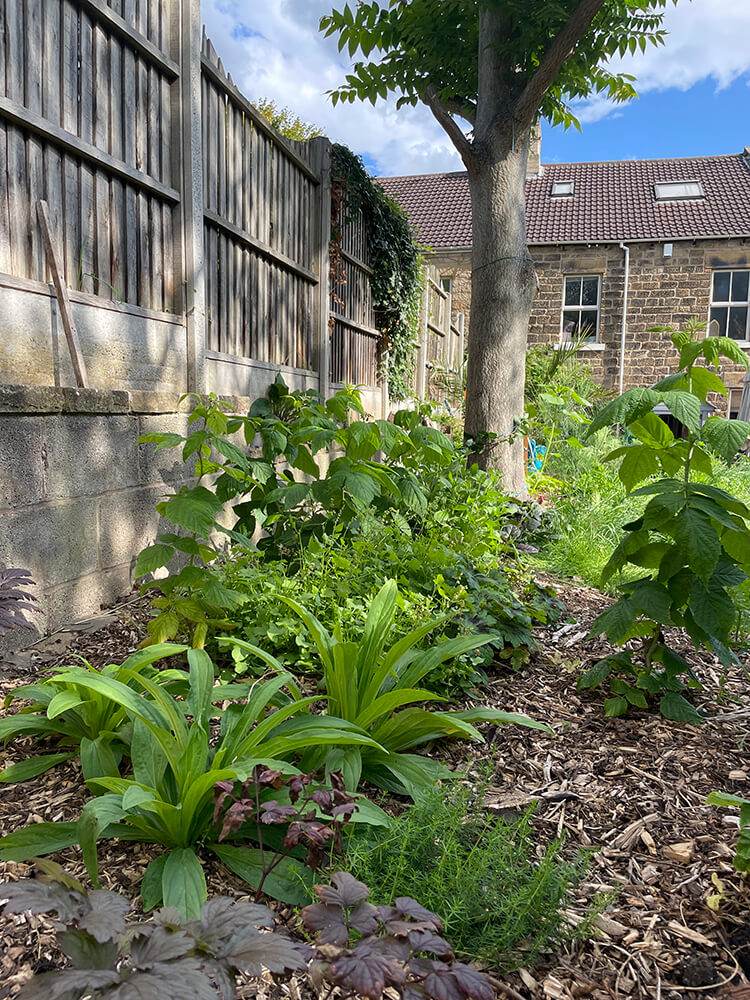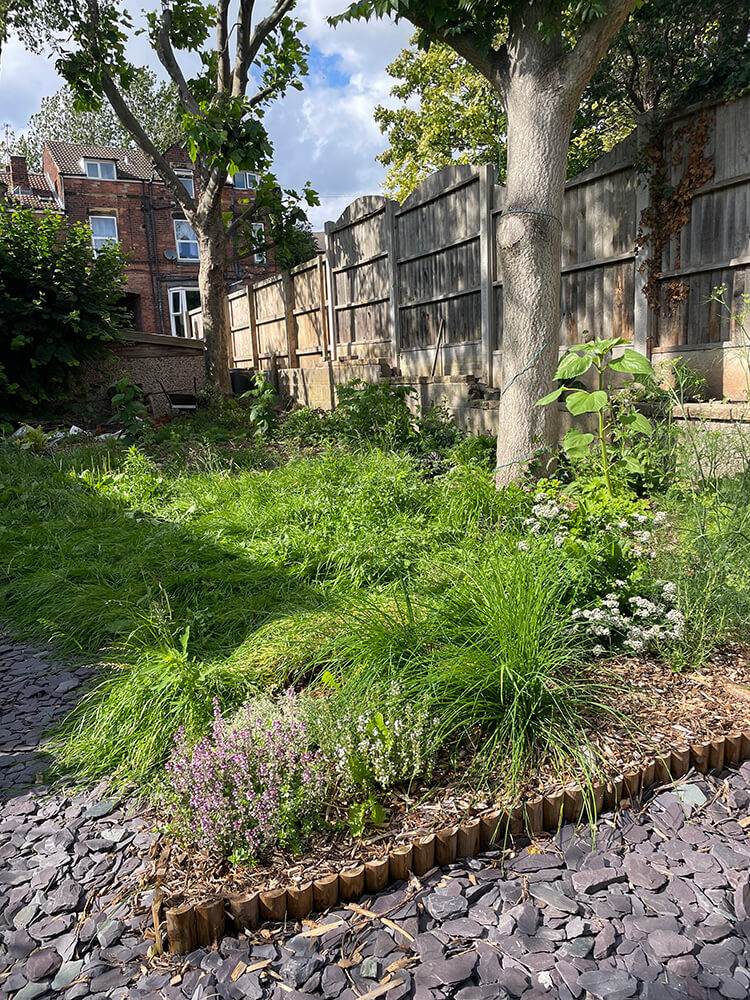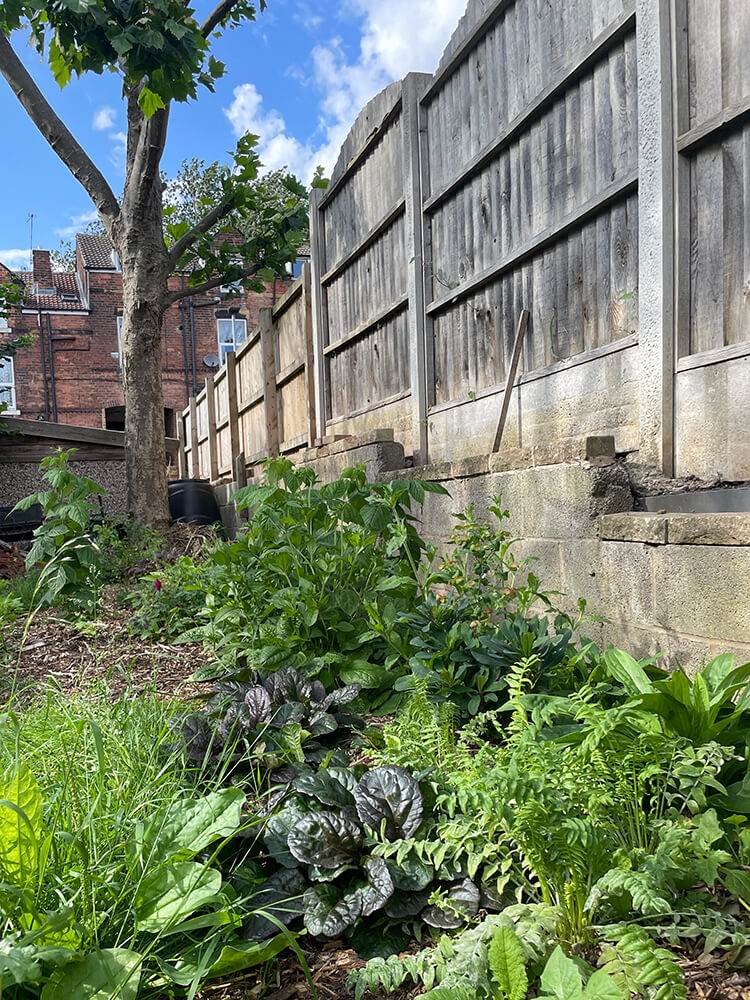

Regather’s Garden Service, designing edible and wildlife gardens, is now a year and a half old. In that time I’ve helped dozens of people to create their dream garden. It is a real pleasure to share my love of plants and nature-inspired design with Sheffield’s gardeners.
I’ve been able to demonstrate that no matter how small the garden, it can provide huge benefits for wildlife. By making certain choices, we can make a real difference. With positive ripples felt far beyond the garden fence and into the wider ecosystem.
My designs are firmly rooted in practical planting choices. If you’ve heard of the ‘Right Plant, Right Place’ concept, well I take this even further. My mission is to encourage people to think of plants in terms of their ‘usefulness’. Plants are not purely decorative. This often means choosing native plants, ones that are fast disappearing from our countryside, yet it can also mean designing with non-native species that serve a ‘useful’ function.

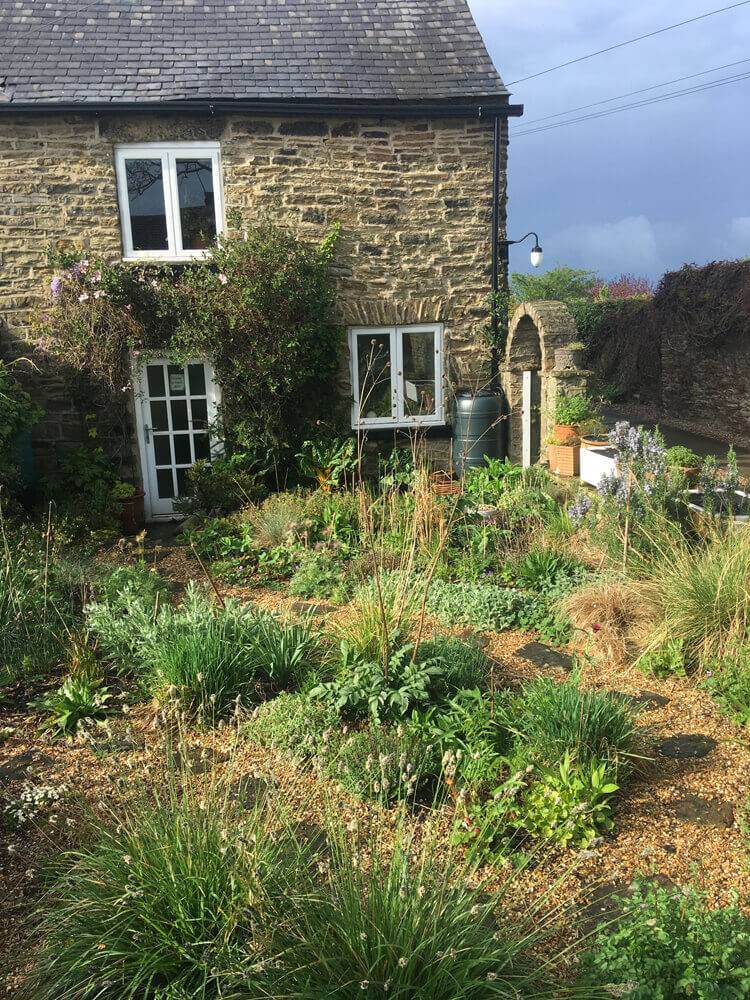
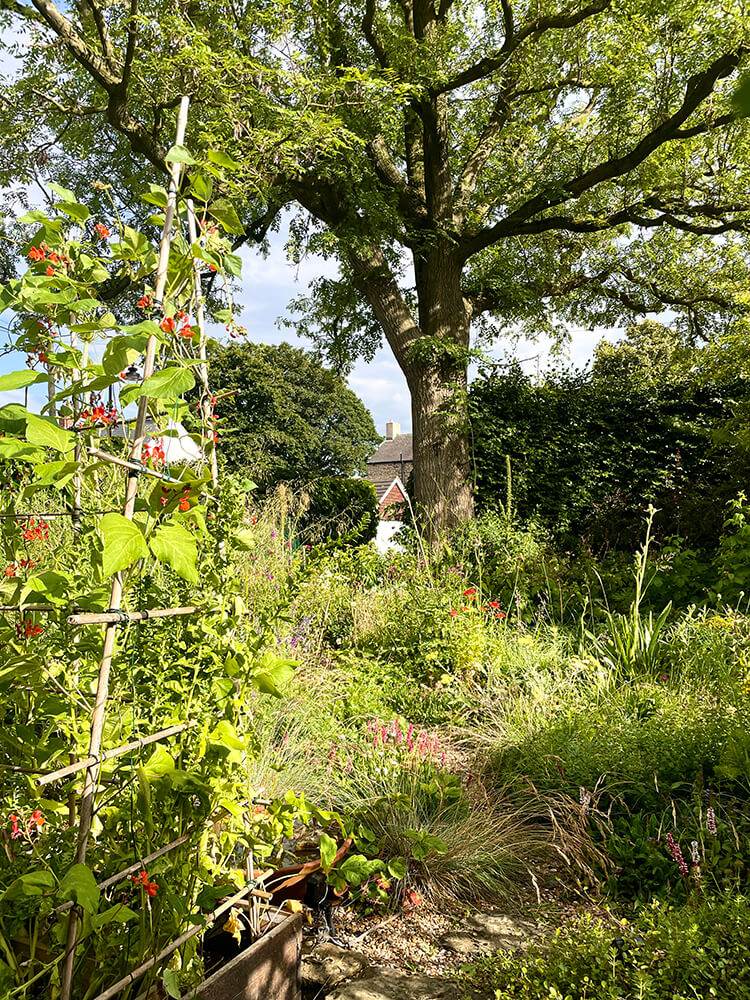
Useful does not mean less beautiful. Here’s some photographs from my cottage garden at different points in the year. Now that the planting is mature, it is full to the brim with food for insects, birds and other garden visitors. Yet it not only feeds the wildlife. I’ve managed to fit ten different varieties of high-yielding and easy to grow vegetables, and all the herbs I need to cook with.
When I visit a garden, I take it all in: the aspect; the size; the altitude; the current planting; the surrounding landscape – then I ask about the gardener. This is to establish what you need, plus what means and time you have available to achieve it. This is the pragmatic approach to creating a garden, informed by my 30 years gardening experience backed up by training in landscape design and management.
Growing fruit and vegetables at home can be a real joy but can also be a source of frustration. Based on your site’s conditions, I’ll give you a straightforward appraisal of what you should and should not be attempting to cultivate. Plus I will recommend to you all the edible plants that are also excellent for wildlife – the perfect plant!
With the Simple Design service you get:
Essentially a complete plan for the transformation of your garden.

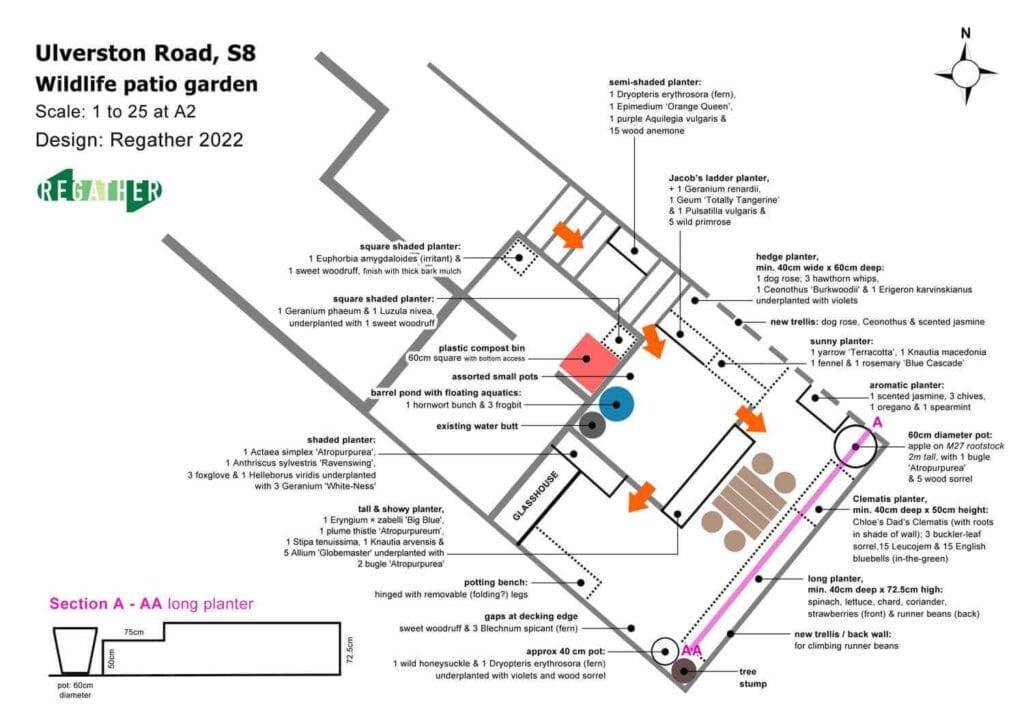
Chloe’s rear of terrace garden design. Though the space is compact it is now bursting with wildlflowers and edible plants.
Using planters optimally arranged on the existing decking, the vertical growing space is now maximised and rainfall is harvested for watering vegetables.
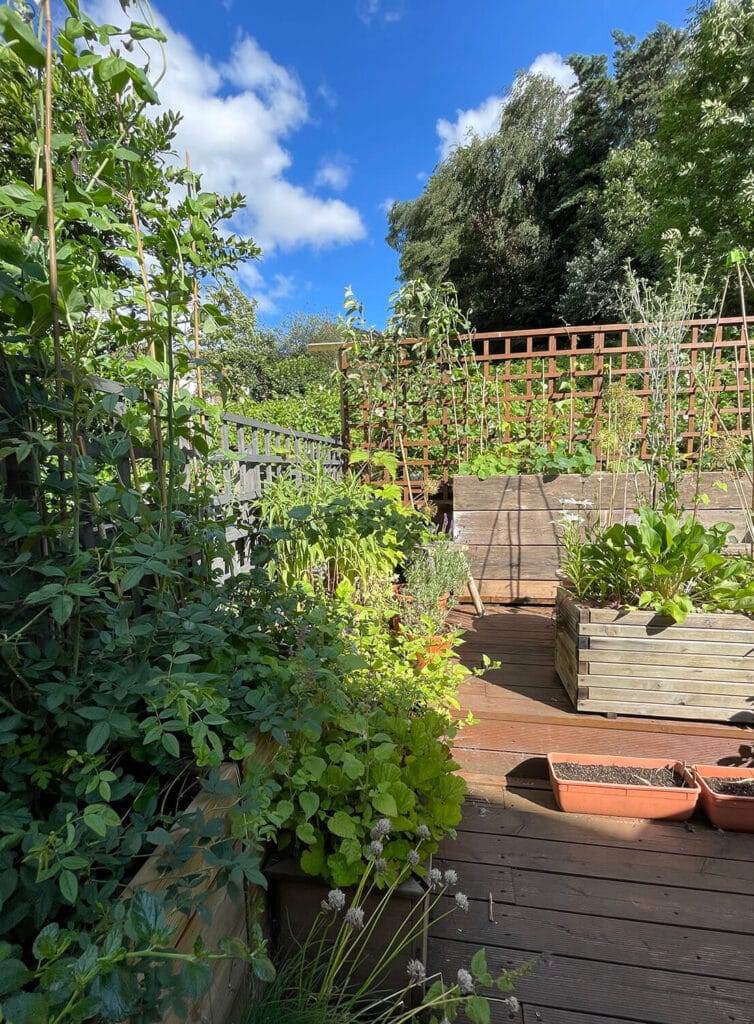
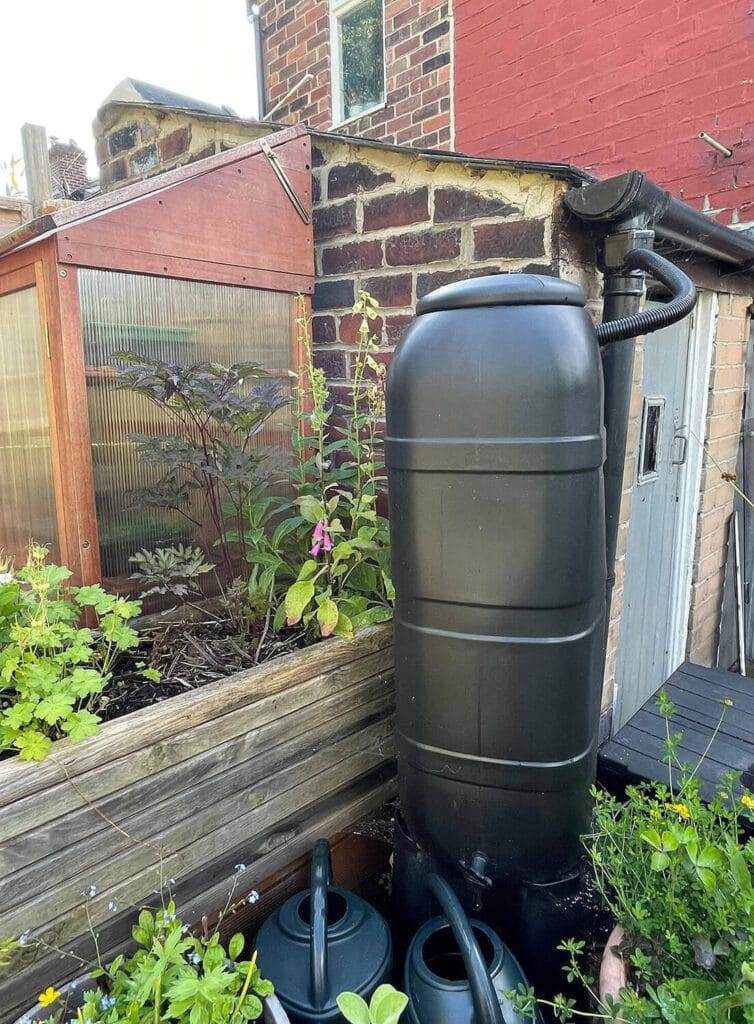
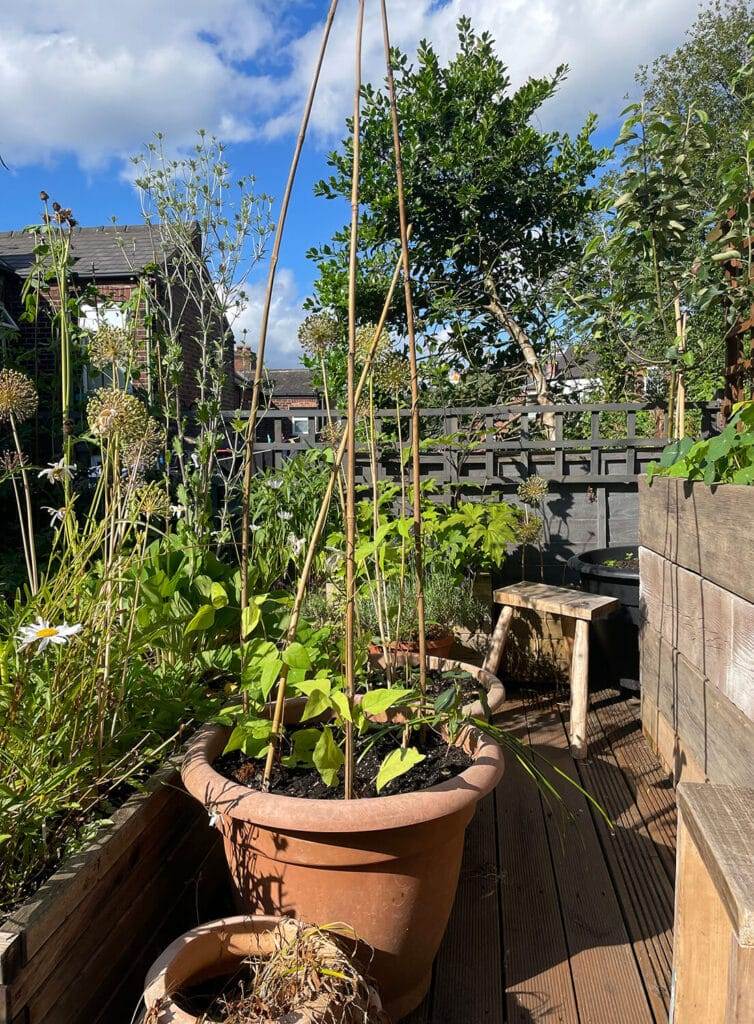
“My garden design was excellent. It saved me tons of time and energy and made it easy to structure my tiny garden for maximum growing and wildlife potential! 18 months on and I’m absolutely delighted with the results – my garden is bursting with life. I couldn’t recommend the service more!” – Chloe C, Woodseats.
Not everyone needs a whole garden design and this is why I also offer consultations, with an hour priced at £50 (£65 / £80 for 90 minutes / 2 hours). This is helpful when you want ideas for a smaller area within your garden or if you want advice on starting a project, such as where to plant a tree or build a pond. Other customers have sought my expertise on identifying plants, help them decide what to keep when thinking about remodelling their space or working out solutions to deal with invasive species. You will also receive my ‘Essential Plants’ list, with 20 top recommendations for full sun, partial shade and full shade.
“From a two hour consultation I now have a much clearer vision for my garden. How to look after what we already have and new plants that are best suited to the different areas. It’s saved me a lot of time in research and trial and error, as well as proving ideas that I would never have thought of without outside expertise. Well worth the investment!” – Jean H, Dore.
As of spring 2023, we now install the gardens we design. Here’s some photos from our first edible wildlife garden installation for Lauren, a customer in Rotherham. They show the planting after three months of growth – we are yet to tackle the lawn, which is a job for autumn.
The planting scheme is mostly comprised of native woodland and woodland edge species, which thrive in the dappled shade of a mature tree canopy. However, I also identified the sunniest spot for culinary herbs and raised beds for vegetables.
